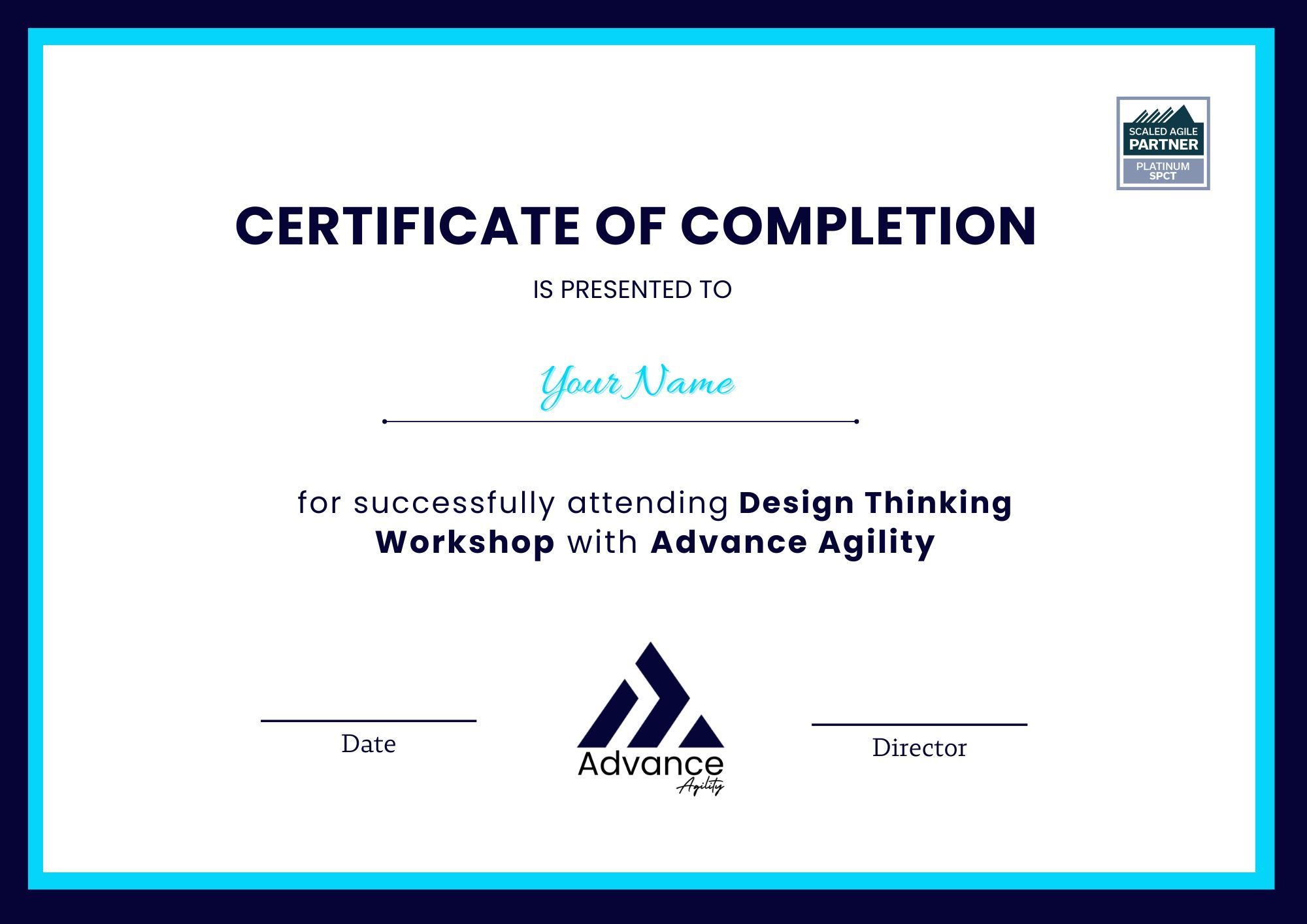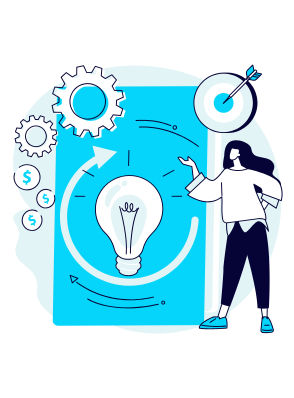Register today and get 10% off on all our courses
Coupon Code: DIS10*
Register today and get 10% off on all our courses
Coupon Code: DIS10*

Date
04 Nov
Time
4:00 AM - 8:00 AM (EST)
4.9/5
4.9/5
Upcoming Events
+
+
+
In the dynamic landscape of modern business, creative problem solving has become an important skill. Design thinking methodology, particularly in the context of Design Thinking Agile, Agile UX Design, and Scrum and Design Thinking, is pivotal in understanding user needs (empathy), defining the problem, ideation, prototyping, testing based on customer feedback. This course centers on the pivotal relationship between innovation and effective problem-solving, introducing participants to the principles and practical applications of design thinking Framework. Participants will not only learn the fundamentals but also gain mastery in utilizing various tools and techniques integral to the User-Centric Agile, Agile Product Design, and the Agile Design Process to build user-specific and innovative solutions. design thinking approach to build user-specific and innovative solution.
Design thinking encompasses the knowledge about how people approach design challenges and the array of cognitive, strategic, and practical techniques designers use in the creative process. It's not just a concept; it's the understanding and methods designers bring to crafting solutions that resonate with human experiences. It serves as the dynamic link, bridging the theoretical understanding of design challenges with the hands-on, innovative process of bringing ideas to life. Incorporating methodologies like Design Thinking in Agile, Agile UX Design, Scrum and Design Thinking, User-Centric Agile, Agile Product Design, and the Agile Design Process, it forms a comprehensive Design Thinking Framework that propels the transformation of ideas into impactful solutions.
Definition of Design Thinking
Design Thinking Framework
Importance of Design Thinking
Design thinking, encapsulated in five key steps. These steps are vital as they systematically guide the creative process, ensuring a deep understanding of user needs and iterative refinement. This approach, incorporating methodologies like Agile UX Design and User-Centric Agile resulting in innovative and user-centric solutions. These steps empower designers to resolve complex challenges effectively and deliver best practical solutions.
Empathize
Define
Ideate
Prototype
Test
In project management, development teams employ planning poker, also known as "scrum poker" or "pointing poker," as a gamified approach to estimate the effort required for tasks. These estimates, derived from the collective input and consensus of the entire team, are not only more accurate but also add an element of engagement to the estimation process compared to other methods.
Writing Vision
Empathy Maps
Creating Strategic Themes
Story Maps
Creating Epics
Whole Product Thinking
Journey Maps
By incorporating other Innovation Games into your strategy, the Show and Tell activity can elevate engagement levels, fostering a collaborative environment that sparks creativity. This dynamic approach not only enhances enjoyment but also unlocks a wealth of unique and compelling outcomes, making the innovation process more vibrant and effective.
Me and my shadow
Start of the day
Priyanka has achieved value-driven worldwide transformative initiatives by developing and putting into practise organizational vision, mission, and business strategies while taking into account the dynamics of change in the enterprise environment, business priorities, market conditions, and organisational cultural sensitivity through a collaborative and iterative methodology building high performing teams to enable strategy execution.

Learning to lead Agile transformation in Our Teamenterprises & Get Certified
We encompass a comprehensive range of expertise, providing 360 guidance in established frameworks to our clients.
Rather than viewing ourselves merely as a vendor or provider, we see ourselves as dedicated partners in success, actively paving the way for our clients' future achievements.
Get professional guidance from
learning
advisors

Upskill and reskill your team with our corporate training programs.
Reach Us
04 Nov
We’re Agile, so we don’t need to estimate” Wrong!
Start
from
$500

04 Nov
We’re Agile, so we don’t need to estimate” Wrong!
1 Enrolled
Start
from
$500